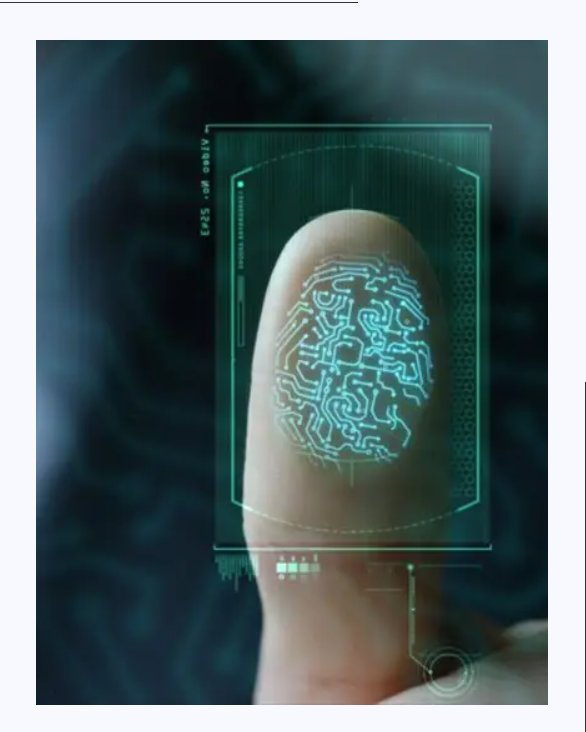The Role of Liveness Checks and Online Fingerprint Scanners in Identity Verification
Fingerprint scanning has long been a trusted biometric authentication method. With advancements in technology, online fingerprint scanners are now widely used for secure identity verification, particularly in banking, digital transactions, and government services.

In today's digital era, security and identity verification have become crucial for businesses and individuals alike. With the rise of online transactions, remote onboarding, and digital authentication, organizations are increasingly adopting biometric security measures to ensure the legitimacy of users. Two of the most effective biometric authentication methods are liveness checks and online fingerprint scanners. These technologies help prevent fraud, enhance security, and provide a seamless verification experience.
Understanding Liveness Checks in Identity Verification
Liveness detection is a cutting-edge biometric security feature designed to differentiate between a real, live person and a spoofed representation, such as a photo, video, or 3D mask. Liveness checks play a crucial role in biometric authentication systems, ensuring that identity verification is not compromised by fraudulent attempts.
How Do Liveness Checks Work?
Liveness detection employs advanced AI-driven algorithms, computer vision, and machine learning techniques to analyze the physical presence of an individual. The process includes:
-
Active Liveness Detection: Users perform specific actions, such as blinking, smiling, or moving their head, to confirm their presence.
-
Passive Liveness Detection: AI-based solutions analyze facial movements, skin texture, and reflection patterns to detect whether the image is of a real person or a spoofed attempt.
-
3D Depth Analysis: This method uses 3D mapping and infrared technology to capture depth information, ensuring that the subject is a real person and not a printed image or video replay.
Importance of Liveness Checks
Liveness detection prevents identity fraud in multiple sectors, including banking, fintech, healthcare, and e-commerce. It ensures that digital onboarding, KYC (Know Your Customer) processes, and remote authentication remain secure and reliable. Key benefits include:
-
Preventing Spoofing Attacks: Stops fraudsters from using stolen images or videos to bypass verification.
-
Enhancing User Trust: Provides a robust security layer, ensuring users that their identity is protected.
-
Seamless Customer Experience: Automates authentication, reducing manual checks and making verification faster and more efficient.
Fingerprint Scanners Online: A Secure Biometric Authentication Solution
Fingerprint scanning has long been a trusted biometric authentication method. With advancements in technology, online fingerprint scanners are now widely used for secure identity verification, particularly in banking, digital transactions, and government services.
How Do Online Fingerprint Scanners Work?
An online fingerprint scanner captures an individual's fingerprint and compares it to a stored biometric template to verify identity. These scanners use different techniques for scanning and authentication:
-
Optical Scanners: Capture high-resolution fingerprint images using LED-based sensors.
-
Capacitive Scanners: Use electrical currents to detect fingerprint ridges and valleys.
-
Ultrasonic Scanners: Utilize sound waves to create detailed 3D fingerprint maps, making them highly secure.
-
Touchless Scanners: Advanced AI-based solutions use smartphone cameras to scan fingerprints remotely without physical contact.
Benefits of Online Fingerprint Scanners
Fingerprint scanners offer a secure and convenient alternative to traditional passwords and PINs. Their benefits include:
-
Enhanced Security: Fingerprints are unique to each individual, making them difficult to replicate.
-
Convenience: No need to remember passwords; users can authenticate with a simple touch or scan.
-
Fast and Accurate Authentication: Fingerprint matching happens in seconds, ensuring quick and efficient identity verification.
-
Wide Application: Used in online banking, government ID verification, secure access control, and e-commerce.
Liveness Detection vs. Fingerprint Scanners: Which Is Better?
Both liveness checks and fingerprint scanners provide robust biometric security, but their effectiveness depends on the use case:
-
Liveness Checks are ideal for remote identity verification, ensuring that users cannot spoof authentication systems using fake images or videos.
-
Fingerprint Scanners are more suited for scenarios requiring high security, such as financial transactions, access control, and government services.
-
Combined Approach: Many organizations integrate both technologies for enhanced security, reducing the chances of fraud while ensuring a seamless user experience.
Industries Benefiting from Liveness Checks and Fingerprint Scanners
1. Banking and Finance
Banks use biometric authentication to verify customer identities during online transactions, account logins, and digital onboarding. Liveness detection prevents identity theft, while fingerprint scanning secures mobile banking applications.
2. Healthcare
Hospitals and clinics utilize these technologies to ensure secure access to patient records and prevent medical identity fraud.
3. Government and Law Enforcement
Fingerprint authentication is a key component of national ID systems, border security, and law enforcement databases. Liveness detection ensures that biometric databases remain uncompromised.
4. E-Commerce and Digital Services
Online retailers and service providers implement biometric authentication to prevent account takeovers and fraudulent transactions.
Conclusion
As digital threats continue to evolve, businesses and individuals must adopt advanced biometric security solutions to protect sensitive information. Liveness checks and online fingerprint scanner offer an effective way to combat fraud, enhance security, and streamline identity verification processes. By integrating these technologies, organizations can build trust, improve user experiences, and stay ahead of cyber threats in an increasingly digital world.
What's Your Reaction?



















